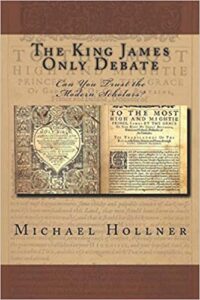 (Read part 1). Part 2 will cover chapter 14, “The Septuagint Fallacy.” This is the title in the table of contents. As I pointed out in part 1, only three chapters have the same title as that listed in the table of contents. The title of chapter 14 is “The Real History of the Septuagint LXX: Do You Really Know What the LXX Septuagint Is?” Most recognized scholars believe that the Septuagint or LXX is the Greek translation of the Hebrew Old Testament that was quoted by Christ and the Apostles. The evidence for this is scant. There are some Greek fragments of the Pentateuch that have been dated, supposedly, to the first and second centuries B.C. And there are also some Greek fragments of the Minor Prophets that have been dated, supposedly, to the first century B.C. Relatively complete manuscripts of the LXX are Codex Vaticanus and Codex Alexandrinus. Incomplete manuscripts of the LXX are Codex Ephraemi Rescriptus and Codex Sinaiticus.
(Read part 1). Part 2 will cover chapter 14, “The Septuagint Fallacy.” This is the title in the table of contents. As I pointed out in part 1, only three chapters have the same title as that listed in the table of contents. The title of chapter 14 is “The Real History of the Septuagint LXX: Do You Really Know What the LXX Septuagint Is?” Most recognized scholars believe that the Septuagint or LXX is the Greek translation of the Hebrew Old Testament that was quoted by Christ and the Apostles. The evidence for this is scant. There are some Greek fragments of the Pentateuch that have been dated, supposedly, to the first and second centuries B.C. And there are also some Greek fragments of the Minor Prophets that have been dated, supposedly, to the first century B.C. Relatively complete manuscripts of the LXX are Codex Vaticanus and Codex Alexandrinus. Incomplete manuscripts of the LXX are Codex Ephraemi Rescriptus and Codex Sinaiticus.
Hollner’s overall thesis of this chapter that the LXX is a fraud is sound. However, much of what is found in the chapter is not. The word “Apocrypha” is only capitalized once. Codex Ephraemi Rescriptus is not mentioned. Wikipedia is cited as a source.The Apocrypha is referred to as “it” and “them” in the same sentence, and is elsewhere called a “reading.” The Apocrypha was not “later removed in all KJV reprints.” That some modern scholars accept the Apocrypha as Scripture does not make it true that it “is nowhere accepted as Scripture except by modern scholarship and the Roman Catholic Church.” And these are just the errors in the first paragraph on page 418.
The errors in the rest of the chapter are legion. Words are capitalized that should not be, and words that should be capitalized are not. Book titles are not put in italics. Words are unnecessarily put in italics. Parentheses are not used where they should be. En dashes are used for Em dashes. Apostrophes are used incorrectly. The quote by the unidentified Scott Jones on page 425 has no close quote mark so there is no way to determine where it ends. Hollner misinterprets his quote from Josephus (p. 433).
The term “Masoretes” and “Masoretic Text” should never be applied to anything before the time of Christ. No one claims that “the 7th-10th century Masoretes somehow created a new ‘Masoretic’ text” (p. 419). The first Hebrew Bible (OT) to be printed was in 1488 at Soncino, Italy, not in 1477. It is an overstatement to say that “there is more evidence for a ‘Tooth Fairy’ than there is for a B.C. Greek Septuagint” (p. 420). Hollner assumes his readers will know that “Brenton” is a reference to the edition of the LXX by Sir Lancelot C. L. Brenton. This is called both “Vaticanus/Sinaiticus” and “Vaticanus” (p. 424). Gerhard Kittel (1888-1948), the German Lutheran theologian and lexicographer at the University of Tübingen and editor of the Theological Dictionary of the New Testament did not produce “a corrupted Hebrew text” (p. 421). It was his father, Rudolf Kittel (1853-1929), an Old Testament scholar and professor at Breslau and Leipzig, who edited a critical edition of the the Hebrew Bible titled Biblia Hebraica. Hollner says that the Biblia Hebraica 1937 edition had 30,000 changes from “the true Masoretic text,” but then goes on to say that its footnotes “suggest from 20,000 to 30,000 changes throughout the whole Old Testament” (p. 421). The Leningrad Codex is not “corrupt,” and is an edition of the Masoretic Text (p. 421). Although Hollner claims that “many words are missing” (p. 421), he doesn’t give any examples. The Biblia Hebraica Stuttgartensia (Hollner’s “Stuttgart edition” of 1966-1967) was issued in fascicles from 1968 to 1976, and published in one volume in 1977. Stay tuned for the third installment.